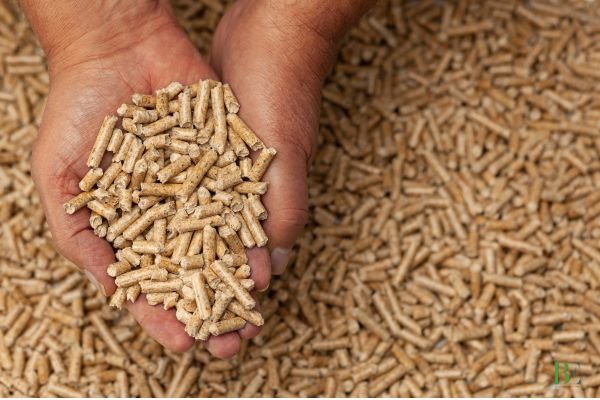
Comparative Analysis: Different Types of Biomass Pellets
Biomass pellets are small, cylindrical pieces (typically 6–10 mm in diameter and 10–30 mm in length) produced by compressing organic matter under high pressure. No additional binders are typically required, as the natural lignin in the biomass acts as a binder during the pelleting process.
Common Raw Materials:
- Wood residues: sawdust, wood chips, bark
- Agricultural residues: straw, corn stalks, rice husks, sugarcane bagasse
- Energy crops: switchgrass, miscanthus
- Organic waste: food waste, nutshells, and paper waste (with additional processing)
Bioenergy Solutions team of experts have come up with comparative analysis between the main types of biomass pellets based on feedstock – wood pellets, agricultural biomass pellets, and mixed biomass pellets:
| Factors/Type | Wood Pellets | Agricultural Biomass Pellets | Mixed Biomass Pellets |
|---|---|---|---|
| Raw Material Source | Sawdust, wood chips, bark | Crop residues (straw, husks, stalks, bagasse) | Combination of wood and agro waste |
| Energy Content (Calorific Value) | 16–20 MJ/kg | 13–17 MJ/kg | 14–18 MJ/kg |
| Ash Content | 0.5% – 1.5% | 3% – 7% (sometimes higher) | 1.5% – 5% (depends on ratio) |
| Moisture Content | 6% – 10% | 8% – 12% | 7% – 11% |
| Color | Light tan to golden brown | Brown to greyish | Varies by composition (often darker) |
| Density | 600 – 750 kg/m³ | 500 – 650 kg/m³ | 550 – 700 kg/m³ |
| Durability | High | Medium to low (can crumble easily if not well processed) | Medium |
| Combustion Efficiency | High (due to low ash and uniform size) | Lower (variable burn quality, slag formation risk) | Moderate |
| Corrosive Components (e.g., Cl, K, Na) | Very low | Often high (can cause corrosion in boilers) | Moderate (depends on mix) |
| Storage Requirements | Moderate; less sensitive to moisture | High; more prone to spoilage from humidity | Moderate |
| Emission Profile | Clean; low particulates and sulfur | Higher NOx, particulate matter, and slagging | Variable |
| Cost | Medium to high | Low (cheaper raw materials) | Medium |
| Application Suitability | Residential heating, industrial boilers, co-firing | Large-scale power plants, low-cost heating | General heating, co-firing |
| Availability | Readily available in developed countries | Abundant in agricultural regions | Depends on local sourcing and processing |
| Sustainability | High if sustainably harvested | High if residues used and not over-harvested | Medium; depends on feedstock sourcing |
Best Uses Based on Type:
| Application | Recommended Pellet Type |
|---|---|
| Home heating (pellet stove) | Wood Pellets (low ash) |
| Industrial co-firing (coal plants) | Mixed or Wood Pellets |
| Rural or low-cost heating | Agricultural Pellets |
| Clean cookstoves in developing areas | Agricultural or Mixed Pellets |
